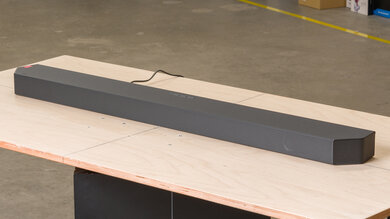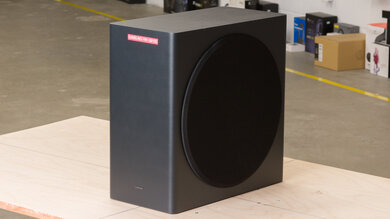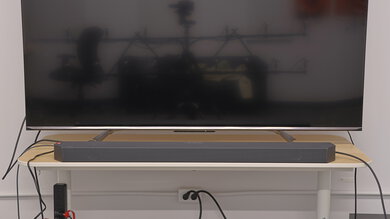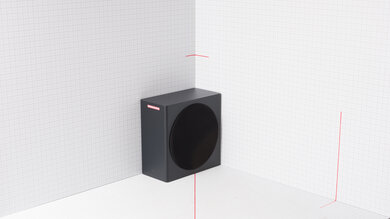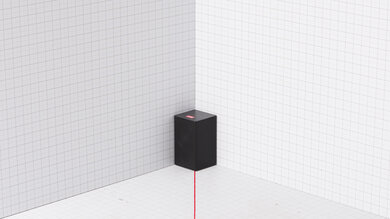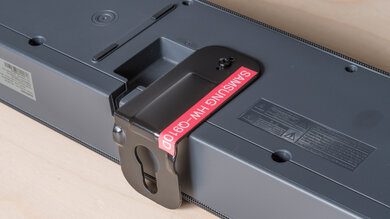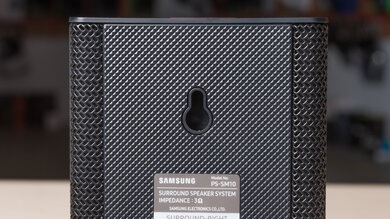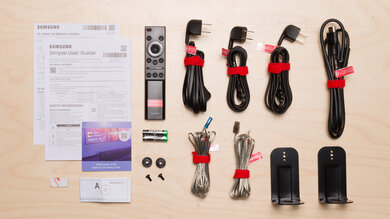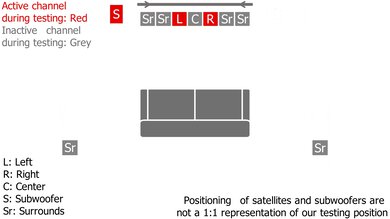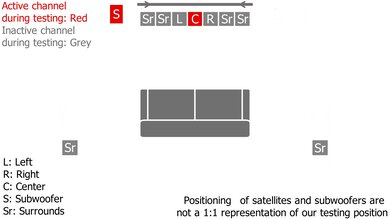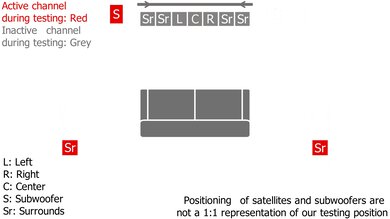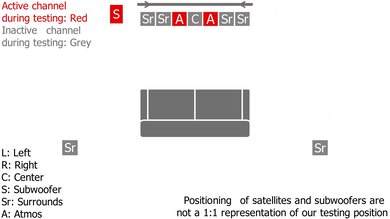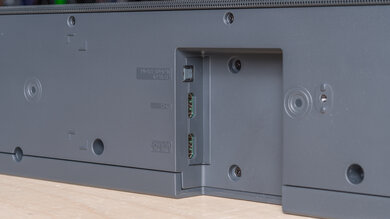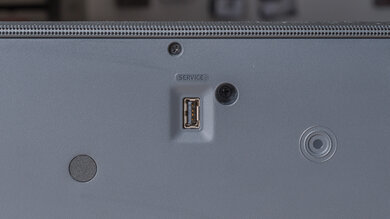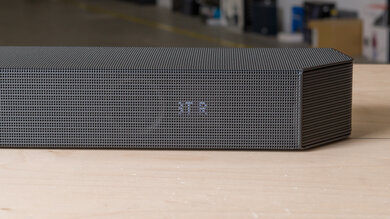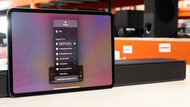The Samsung HW-Q910D is a 2024 mid-range 9.1.2 soundbar offering from Samsung that offers an array of familiar features: Dolby Atmos compatibility, a HDMI 2.1 In port and the ability to passthrough a 4k signal at 120Hz. It's a (mostly) wire-free design, with a wireless sub, though the two satellites need to be wired to a receiver in order to work. Positioned just below the flagship Samsung HW-Q990D, it brings many of the more premium bar's features to the table at a competitive price point.
Our Verdict
The Samsung HW-Q910D is impressive for mixed usage. It's 9.1.2 configuration, with rear speakers and a discrete sub makes it a real all-rounder: with a balanced frequency response that can be tweaked via sound modes and a 7-band EQ. There's plenty of punchy bass on tap, as well as a balanced mid-range and smooth treble response that can help both music and movie audio shine. The two satellite speakers create an immersive 5.1 surround experience that can envelope you with sound, but it falls short of more premium bars' ability to convey verticality with Atmos content. The focused, detailed center channel is great at rendering dialogue and vocal-centric content in an articulate and intelligible way, aided by dialogue enhancement features like the Active Voice Amplifier.
-
Compatible with most audio formats, including Dolby Atmos and DTS:X.
-
SpaceFit Sound Pro room correction tool.
-
Full HDMI 2.1 In port.
-
Discrete center channel with great focus.
-
Only supports 4k @ 120Hz @ passthrough up to 8-bit.
-
Atmos height performance isn't up to par with more premium models.
The Samsung HW-Q910D excels when it comes to TV shows and dialogue-driven content. Its even frequency response balances a controlled bass range with a detailed mid-range and articulate highs, with limited spillover between frequency bands. The discrete center channel renders conversations in a precise and focused way, meaning rapid-fire conversations are easy to follow and can be pinpointed within the stereo field. You can further enhance dialogue using features like Active Voice Amplifier, too. Even when you crank the volume up to near max, the detail is preserved, and there's minimal compression present that can reduce the clarity of dialogue.
-
Compatible with most audio formats, including Dolby Atmos and DTS:X.
-
SpaceFit Sound Pro room correction tool.
-
Discrete center channel with great focus.
-
Satellite speakers still need to be wired to a receiver.
The Samsung HW-Q910D is a great choice for music. The dedicated sub makes for a tight, punchy low-end that doesn't overwhelm the very balanced mid-range, meaning delicate vocals won't be overwhelmed by big kicks and sub-bass frequencies. The stereo soundstage is wide too, extending to the bar's extremities, which can make for an enveloping experience when listening to live orchestral performances, for example. The dynamics performance is also a step up from previous iterations, reaching the same (loud) max volume as the Samsung HW-Q910B, while reducing compression and better preserving the dynamics of the original mix.
-
Compatible with most audio formats, including Dolby Atmos and DTS:X.
-
SpaceFit Sound Pro room correction tool.
-
Satellite speakers still need to be wired to a receiver.
The Samsung HW-Q910D is an impressive soundbar for watching movies. It's compatible with the whole gamut of audio formats, from Dolby Digital and DTS to object-based formats like Dolby Atmos and DTS:X. Its 9.1.2 configuration with two satellites, a wireless sub, and a discrete center channel mean it's well-equipped for surround sound and Atmos content. Consequently, it's capable of creating an immersive listening experience that extends both vertically and horizontally. While the subwoofer isn't especially boomy, it outputs a tight bass that still adds intensity to rumbles and explosions. The balanced mid-range and dedicated center channel ensure dialogue stays prominent in the mix so that you can follow along with the plot. This bar can get plenty loud with minimal compression as well, ensuring consistent audio reproduction even within a large home cinema environment.
-
Compatible with most audio formats, including Dolby Atmos and DTS:X.
-
SpaceFit Sound Pro room correction tool.
-
Discrete center channel with great focus.
-
Atmos height performance isn't up to par with more premium models.
- 8.4 Mixed Usage
- 8.7 Dialogue/TV Shows
- 8.3 Music
- 8.3 Movies
Changelog
- Updated May 13, 2025: Review published.
- Updated May 06, 2025: Early access published.
- Updated Apr 25, 2025: Our testers have started testing this product.
- Updated Mar 14, 2025: The product has arrived in our lab, and our testers will start evaluating it soon.
- Updated Mar 03, 2025: We've purchased the product and are waiting for it to arrive in our lab.
Check Price
Differences Between Sizes And Variants
The Samsung HW-Q910D is the next generation of the Samsung HW-Q910C. It's available in just one color: 'Black', and here's a picture of its label.
If you encounter any other variants of this soundbar, please let us know in the comments, and we'll update our review.
Popular Soundbars Comparisons
The Samsung HW-Q910D is a mid-range 9.1.2 soundbar with a few premium features that help it stand out in a crowded price range. As is often the norm with Samsung, there have been incremental improvements from the Samsung HW-Q910B from two generations prior. The 2024 Samsung HW-Q910D adds Chromecast support, as well as FreeSync and G-SYNC passthrough, for those who want to use the bar as a hub between their PC and TV. Performance-wise, the two are very similar, though the newer model can get a little louder with less compression at max volume. If you're looking to splash on the flagship model, the Samsung HW-Q990F offers a smaller, redesigned subwoofer, as well as four up-firing drivers for a more immersive Atmos experience. Finally, looking outside of the Samsung ecosystem, the LG S90TR offers a 7.1.3 channel configuration with 4k passthrough @ 120Hz. Its center channel performance isn't as strong as the Samsung Q910D, though, and its up-firing drivers don't create a particularly convincing impression of height in Atmos content. Otherwise, there's not much to split these two bars, beyond integration with their respective product ecosystems.
See also our recommendations for the best soundbars for movies, the best Samsung soundbars, and the best Dolby Atmos soundbars.
The Samsung HW-Q990D is Samsung's 2024 flagship soundbar, and it outperforms the mid-range Samsung HW-Q910D in a few regards. Its 11.1.4 configuration gives it a few more height and surround channels compared to its mid-range cousin, resulting in a more immersive Atmos (height) performance. The Q990D is better-built and also supports 4k passthrough @ 120hz 10-bit. The two bars have a very similar default frequency response otherwise, with similar sound enhancement options and the ability to pair compatible Samsung TVs via Q-Symphony. It'll be up to you to decide if these flagship features warrant an additional outlay.
The Samsung HW-Q930D and the Samsung HW-Q910D are very similar soundbars, and choosing between them might come down to very small deciding factors. The Q930D is slightly better-built and features fully wireless satellites, while the Q910D requires the satellites to be wired to a receiver. The Q930D also features two more up-firing drivers that help create a more immersive vertical plane in Atmos content, compared to the Q910D. Though the two are neck-and-neck in our other sound tests, the Q910D has a more balanced frequency response out-of-the box. It also supports 4k passthrough at 120Hz, which is great if you plan on using the bar as a hub between your console and display.
The Samsung HW-910D and the LG S95TR are similar soundbars with little to separate them. Both feature a wireless subwoofer and satellites, though the Samsung requires you to wire the satellites to a receiver. They have similarly balanced default frequency responses, with plenty of scope for adjustment, though the Samsung comes out on top when it comes to its surrounds and center channel performance. The LG features three more up-firing drivers than the Samsung, but both offer a comparable Atmos (height) performance that falls short of the most premium bars. Both bars support 4k passthrough via their HDMI In ports, but the Samsung offers compatibility with HDR10+ and FreeSync passthrough. All in all, both soundbars offer compelling features, but the Samsung offers slightly more bang for your buck, unless you value a fully wireless design.
The Samsung HW-Q910D is an incremental upgrade on the Samsung HW-Q910B. Despite there being a generation between them, the differences in both features and performance between these two bars are quite small. Both have balanced default frequency responses, with plenty of scope for sound enhancement. The Q910D offers an improved dynamics performance and a better center channel focus, though the older model's up-firing drivers create a slightly better perception of height in Atmos content. Otherwise, the Q910D comes with Chromecast support, and it supports FreeSync and G-SYNC passthrough, which will suit gamers. If you're okay with foregoing any of these improvements, the older model will likely be available for a marked-down price.
Video
Test Results
The Samsung HW-Q910D shares the same visual DNA as its predecessors, which means that the bar itself looks virtually identical to the Samsung HW-Q910B. It's mostly made of plastic, with perforated metal grilles covering the front, sides, and top of the bar. There are cutouts at the bottom of the bar to aid with cable management, and the controls are located on the top.
As with the bar itself, the sub is nearly identical to the one that comes with the Samsung HW-Q910B. It's still a ported, single-driver design made of a composite material, with a thin layer of cloth covering the driver.
The satellites or rear speakers are connected to a wireless module via traditional speaker cables, which then connect wirelessly to the rest of the system. The connectors on the back are color-coded and labelled, so you don't get confused either. Three of their four sides are covered in perforated metal grilles.
The Samsung HW-Q910D is the same size as the Samsung HW-Q910B. While it's a little smaller than the flagship Samsung HW-Q990D, you might still struggle to fit it between the legs of a 65-inch TV, depending on what kind of stand it has.
The sub is a hair smaller than the one that comes with the Samsung HW-Q990D, but roughly the same size as previous iterations of the Q910X series. It takes up a similar footprint to a desktop PC tower.
The Samsung HW-Q910D's build quality is great and in line with other soundbars from the manufacturer at similar price points. The metal and plastic construction of the bar is similar to previous generations, and it seems sturdy and well-built. Similarly, the composite material of the sub seems like it'll survive years of use, though the fabric covering can easily tear or catch dust. The satellites don't have the same premium feel as those that come with the Samsung HQ-Q990F, though, despite being made of a comparable metal and plastic combination. The cable that connects the speakers to the wireless receiver is thin, and the copper connector tips look susceptible to damage over time.
The Samsung HW-Q910D has an impressive stereo frequency response. We tested it with the SpaceFit Sound Pro room correction enabled and found it to be very similar to the last iteration we tested: the Samsung HW-Q910B. It's more controlled in the bass range, which isn't as boomy. This prevents the bass from overwhelming the mix by bleeding into the mids, though sub-bass sounds, like the low drones in Blade Runner 2049, are still present in the mix. This tuning also ensures the mids are forward in the mix, meaning vocals and lead instruments are presented in a clear, detailed way. The treble can be a little over-emphasized at times, but this is likely due to the slightly underemphasized bass range.
We tested the bar on the 'Standard' setting, but depending on the audio content you're playing back, there are a wide range of other sound modes to choose from. The 'Standard' setting also offers a room correction feature and a 7-band graphic EQ.
We found that using the default settings yielded the best results in our testing room, but you can always tweak the sound via the bass and treble sliders or the 7-band EQ found in 'Standard' mode.
The Samsung HW-Q910D has a good stereo soundstage performance. The soundstage extends about the length of the bar, with no major gaps in the stereo image as you pan from left to right. Focus is good, making it easy to precisely locate elements like voices and sound effects within the mix.
This bar has an impressive dynamics performance. It gets slightly louder than the Samsung HW-Q910B, but there's notably less compression at max volume, though you might notice some artifacts in the bass range when you push the bar to its limits. That said, audio reproduction at 90dB, a more typical listening level, is clean and pure.
The Samsung HW-Q910D has an excellent center performance, thanks to its discrete center channel. Vocals and dialogue sound clear and forward in the mix, even in dense arrangements or conversations. The frequency response across the whole channel is very balanced too, conveying plenty of detail in voices.
The surrounds performance is impressive. The two satellite/rear speakers do a great job of conveying width in surround sound content, stretching the sound field to give a great impression of width in formats like Dolby Digital and DTS. Their frequency response is generally balanced across the entire range, which helps bring out the sounds of cars zipping around you in a chase sequence, for example. There's some overemphasis in the high-bass to low-mid region that can muddy the sound of engine revs.
The Samsung HW-Q910D is capable of playing back Dolby Atmos content and it uses the two up-firing drivers located in the bar to convey a sense of height by bouncing sound off the ceiling.
Overall, it does a solid job of spreading the sound on a vertical plane in front of you, though the frequency response isn't totally even on these channels. The rear speakers lack their own up-firing drivers, so there's no sense of height with audio objects behind you. The treble range is a little under-emphasized, meaning metallic sounds, like scraping metal, can sound a little muted. It's a different story with the bass range, which vividly conveys the sound of toppling towers and ensuing explosions. While the bass doesn't extend all the way into the sub-bass regions, there's still plenty of punch.
That said, the Atmos performance still falls short of the Samsung HW-Q990F, with its four up-firing drivers. Samsung's flagship model does a better job of tracking vertical movement, accurately tracking sounds like ascending elevators, which can create a greater sense of immersion.
The Samsung HW-Q910D comes equipped with an array of customization options that keep it on par with other Samsung models, as well as other premium soundbars. There are several sound modes to choose from besides 'Standard', including 'Surround', 'Game', 'Adaptive Sound', as well as a 'Virtual' mode (found in 'Advanced Sound Settings') that uses DSP to artificially widen the bar's soundstage. You can access a 7-band EQ within the 'Standard' mode too, which lets you dial in a sound with a bit more granularity. For the other modes, there are simple 2-band bass/treble adjustments. There are two forms of dialogue enhancement: 'Active Voice Amplifier' and 'Voice Enhancement'. The former is a DSP setting that applies to all content, while the latter is an EQ adjustment that can be toggled in the 'Advanced Sound Settings'.
There's also a room correction feature, 'SpaceFit Sound Pro,' that helps calibrate the sound to your room's unique acoustics. You can access it via the SmartThings app.
This bar also features Q-Symphony compatibility, a fixture with Samsung soundbars. This feature works with compatible Samsung TVs to integrate the TV speakers into the sound field. Its ability to add an immersive quality to your audio will depend somewhat on your TV, but we've found that it generally doesn't improve performance in a significant way.
The Samsung HW-Q910D supports both HDMI and optical connections, with an HDMI eARC port and a full HDMI In port. There's an HDMI cable included in the box, but you'll need to provide your own optical cable if you choose to connect this way. This bar also features wireless Dolby Atmos compatibility, so you can stream Atmos content from a compatible Samsung TV without an HDMI cable.
The Samsung HW-Q910D supports just about all widely used audio formats over ARC, including Dolby Digital and DTS, as well as object-based formats like Dolby Atmos and DTS:X.
Using the HDMI In port, this bar is compatible with all major audio formats, ranging from DTS and Dolby Digital to object-based formats like DTS:X and Dolby Atmos.
Via optical, both Dolby Digital and DTS formats are supported, as well as two channel PCM, which is great if you own an older TV.
The Samsung HW-Q910D offers a very low latency performance with all audio formats. It's unlikely you'll experience lip sync issues, but you can always manually adjust for this using the A/V sync function in the SmartThings app.
Latency via the HDMI In port is incredibly low. This means that your audio and video will remain synced up if you're using the soundbar as a hub between your TV and a console, for example. While latency will still vary depending on your exact setup, you can always use the A/V sync function in the SmartThings app to compensate for any sync issues.
Latency via an optical connection is extremely low. Although this connection type generally has slightly higher latency than others, PCM and Dolby Digital latency still fall within good values. You can always turn to the A/V Sync function to compensate for any potential sync issues.
This soundbar is capable of passing through high-bandwidth signals using the HDMI In port. While it isn't capable of 4k @ 120Hz passthrough at 10-bit , like the flagship Samsung HW-Q990F, it still supports 4k @ 120Hz passthrough at 8-bit. There's also support for FreeSync and G-SYNC passthrough, which is great for gamers that want to use VRR.
The Samsung HW-Q910D boasts a variety of wireless playback options that will suit most home setups. There's support for Bluetooth and Wi-Fi, as well as Chromecast, Apple AirPlay 2, and Spotify Connect. You can even use Tap Sound to instantly mirror the audio on your phone on the soundbar, with just a light tap. Our unit also came with a QR code to get started with Roon, a compatible third-party app that can house your audio library and help you manage your audio devices.
You can install firmware updates over Wi-Fi via the SmartThings app, but it's worth noting that this soundbar was one of those affected by an OTN (Over the Network) update in March 2025 that caused many Samsung soundbars to stop working and require in-person repairs. If you're concerned about this, it's worth disabling 'Auto Update' in the SmartThings app menu.
The Samsung HW-Q910D's remote is exactly the same as the one that comes with the Samsung HW-Q910B. It lets you adjust many of the parameters available through the SmartThings app in a familiar, physical format. That said, to use functions like SpaceFit Sound Pro room correction, you'll still need to use the app.
This soundbar features built-in support for Amazon Alexa, which gives you hands-free control over the device. A mic mute option is also available, which is great if you value privacy.


